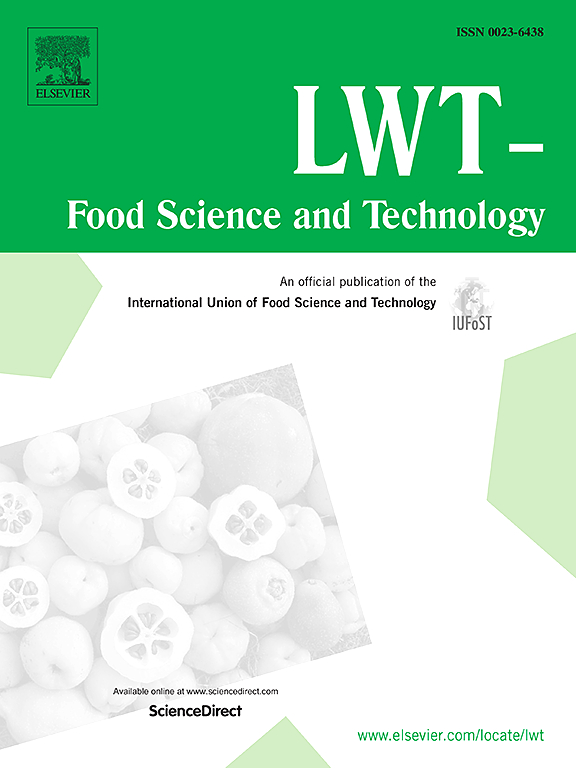球磨芡实淀粉-藜麦蛋白复合物的界面行为及其对皮克林乳液的稳定作用
IF 6.6
1区 农林科学
Q1 FOOD SCIENCE & TECHNOLOGY
引用次数: 0
摘要
本研究探讨了球磨处理对芡实淀粉(GES)和藜麦蛋白(QP)特性的影响,并开发了一种新策略,将球磨后的芡实淀粉与QP复配,研究其对皮克林乳剂稳定性的作用机理。通过扫描电镜和傅立叶变换红外光谱分析发现,球磨处理破坏了 GES 的复合颗粒结构,减小了 QP 的粒径,并导致聚集。不过,这两种物质的化学结构没有发生明显变化。使用球磨 GES/QP 复合物制备的皮克林乳液具有更明显的增稠特性。球磨减小了乳液的液滴大小(D50 从 6.73 ± 0.12 减小到 2.85 ± 0.91 μm),并使分布更加均匀,但过高的蛋白质比例会导致液滴聚集和乳化指数下降。利用新出现的 DIC 观察法证实,用 GES/QP (8/2, g/g) 和 GES/QP (7/3, g/g) 制备的乳液的反向散射光强度几乎没有变化,并且在 20 天后仍具有良好的储存稳定性。这项研究为开发更稳定、更清洁的乳化剂提供了理论依据。本文章由计算机程序翻译,如有差异,请以英文原文为准。
The interfacial behaviors of ball-milled gorgon euryale starch - Quinoa protein complex and its stabilizing effect on Pickering emulsions
This study investigated the effects of ball-milling treatment on the characteristics of gorgon euryale starch (GES) and quinoa protein (QP), and developed a new strategy by compounding ball-milled GES with QP to study the mechanism of its action on the stability of Pickering emulsions. Through SEM and FTIR analyses, it was found that ball-milling treatment damaged the compound granular structure of GES, reduced the particle size of QP, and caused aggregation. However, the chemical structures of both substances did not change significantly. The Pickering emulsions prepared with the ball-milled GES/QP complex exhibited more significant thickening properties. Ball milling reduced the droplet size of the emulsions (D50 decreased from 6.73 ± 0.12 to 2.85 ± 0.91 μm) and made the distribution more uniform, though an excessive protein ratio led to droplet aggregation and a decrease in the emulsification index. Using the emerging observation method of DIC, it was confirmed that the emulsions prepared with GES/QP (8/2, g/g) and GES/QP (7/3, g/g) showed almost no change in backscattering light intensity and still had good storage stability after 20 days. This study provides a theoretical basis for the development of more stable and clean emulsifiers.
求助全文
通过发布文献求助,成功后即可免费获取论文全文。
去求助
来源期刊

LWT - Food Science and Technology
工程技术-食品科技
CiteScore
11.80
自引率
6.70%
发文量
1724
审稿时长
65 days
期刊介绍:
LWT - Food Science and Technology is an international journal that publishes innovative papers in the fields of food chemistry, biochemistry, microbiology, technology and nutrition. The work described should be innovative either in the approach or in the methods used. The significance of the results either for the science community or for the food industry must also be specified. Contributions written in English are welcomed in the form of review articles, short reviews, research papers, and research notes. Papers featuring animal trials and cell cultures are outside the scope of the journal and will not be considered for publication.
 求助内容:
求助内容: 应助结果提醒方式:
应助结果提醒方式:


